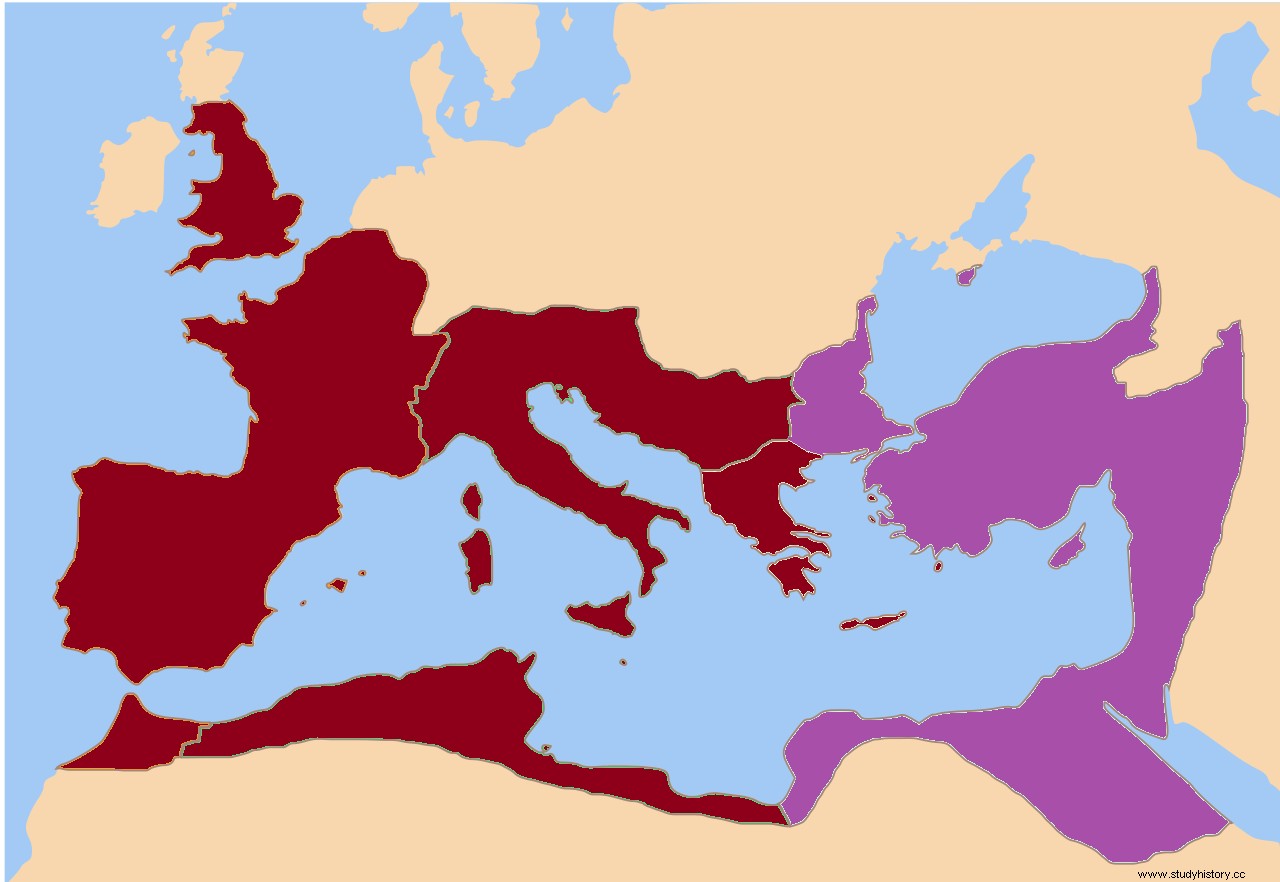For this month's coin we visit Late Antiquity, specifically the year 348 AD, where at that time two brothers, Constans and Constantius II together ruled the Roman Empire. They launched the bronze coins known as Fel Temp Reparatio and should also be the impetus for the restoration of happy times.
Between Rome and America
"Happy Days Are Here Again" was the 1932 campaign song by Franklin Delano Roosevelt who was sworn in as the 32nd president of the United States in 1933. The hopeful message of his campaign turned out to be no lie:as a crisis manager par excellence, Roosevelt guided his country through both the Great Depression and World War II. In the 'Presidential Historians Survey ’ of 2017, American historians even voted F. D. Roosevelt the third “best” president in American history.
Many a Roman emperor has tried to gain such popularity, and coins were a grateful tool for this. After all, almost every Roman – from the small farmer in Gallia Belgica to the wealthy senator in Africa Proconsularis – was handed coins in his or her life. We are not sure who determined what was to be printed on the coins during the Imperial period:was the emperor personally involved in this or was this task delegated to the (coin) administration? In the second case, the administration could not only glorify the emperor to the population, but also raise the profile of the emperor himself by flattering him with new coin designs. Perhaps some emperors were more concerned with monetary matters than others, and the truth lies somewhere in the middle.
Roman quarrel
The brothers Constans and Constantius II were sons of the renowned Constantine the Great (AD 306-337), the first Christian Roman emperor. That Christian faith certainly did not stand in the way of formidable family quarrels. In true Game of Thrones style, Constans and Constantius were the only ones to survive a bloody power struggle in which Constantine's male descendants were systematically eliminated. Nor was there any concord between the remaining brothers:Constantius was an Arian heretic, Constans an orthodox believer. In the 1940s, the two were on the verge of clashing. War was narrowly avoided, however, and monetary necessities forced the brothers to put aside their fraternal quarrels. In 348 AD they reformed the bronze money, which got a whole new iconography and slogan.

Roman Empire in 348 AD Constans ruled the western territories (red), Constantius II ruled the east (purple)
Conflict on the Eastern Front
One of the new coin images - well known among numismatists - was the so-called 'falling horseman The coin below shows a Roman soldier stabbing a falling horseman, an almost unique scene in Roman imagery. The rider is wearing a remarkable headgear on this specimen, which can be recognized as a 'Phrygian cap'. The Romans automatically associated such a cap with the traditional costume of the Persians in the East. The Persian Empire stood in 348 AD. under the rule of the Sassanid dynasty (AD 224 – 651), which turned the weakened Parthian Empire into a formidable adversary to the Romans, regularly making their lives miserable. The Sassanids were – just like their Parthian predecessors – known for their excellent cavalry. Constantius, who ruled the eastern part of the Roman Empire, was regularly in conflict with the Sassanids, often with varying degrees of success. That did not stop him – or his administration – from portraying the situation on the eastern front on the coins as a great Roman success. The coin exudes typical Roman self-assurance, as it were. The coin image must above all be linked to Constantius:Constans got a number of his own coin images that were more attuned to his political situation in the west.

The quality of the coin image often varied. The left coin clearly shows a horse falling with its rider

on the right coin, the horse looks more like a mutilated crocodile
The linking element par excellence between the different coin images of the reform of 348 AD. was the slogan-esque flip side legend FEL TEMP REPARATIO . Perhaps we should read this as FEL(icium) TEMP(orum) REPARATIO , which means something like “The restoration of happy times”, or as one numismatist translated it more smoothly, “Happy Days are Here Again”. Constans and Constantius were, of course, the architects of that restoration. To make the Roman Empire "great" again, the destruction or subjugation of "barbarians" was an important condition. After all, for most Romans the only good barbarian was a dead or enslaved barbarian. Not coincidentally, destruction or subjugation of barbarians (Persian, Gothic, Frankish, or anything else) was a favored theme for coin types. In our time, we can only wait and see if certain potentates will take a similar belligerent course to make their country “great”.
